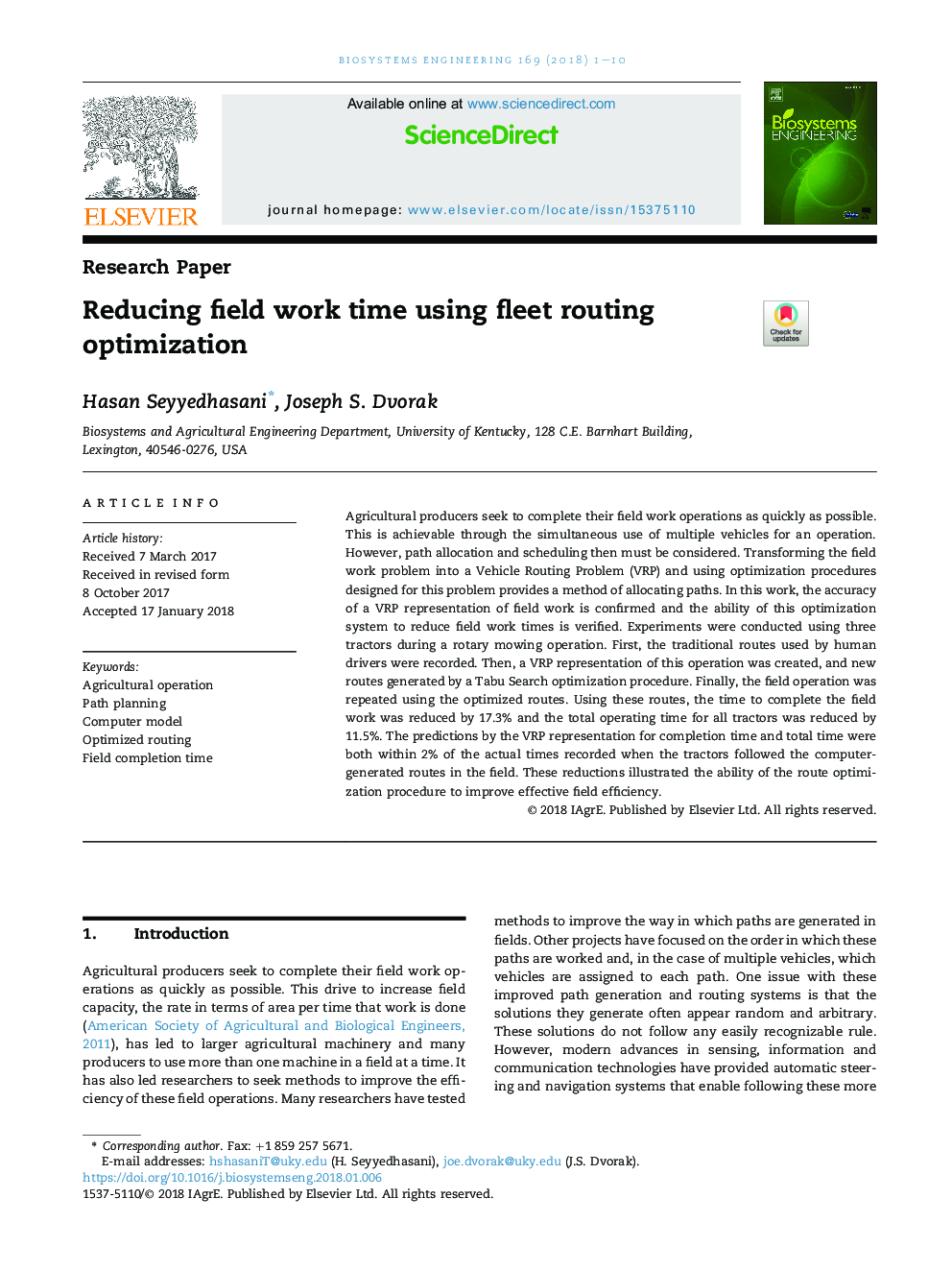| Article ID | Journal | Published Year | Pages | File Type |
|---|---|---|---|---|
| 8054727 | Biosystems Engineering | 2018 | 10 Pages |
Abstract
Agricultural producers seek to complete their field work operations as quickly as possible. This is achievable through the simultaneous use of multiple vehicles for an operation. However, path allocation and scheduling then must be considered. Transforming the field work problem into a Vehicle Routing Problem (VRP) and using optimization procedures designed for this problem provides a method of allocating paths. In this work, the accuracy of a VRP representation of field work is confirmed and the ability of this optimization system to reduce field work times is verified. Experiments were conducted using three tractors during a rotary mowing operation. First, the traditional routes used by human drivers were recorded. Then, a VRP representation of this operation was created, and new routes generated by a Tabu Search optimization procedure. Finally, the field operation was repeated using the optimized routes. Using these routes, the time to complete the field work was reduced by 17.3% and the total operating time for all tractors was reduced by 11.5%. The predictions by the VRP representation for completion time and total time were both within 2% of the actual times recorded when the tractors followed the computer-generated routes in the field. These reductions illustrated the ability of the route optimization procedure to improve effective field efficiency.
Keywords
Related Topics
Physical Sciences and Engineering
Engineering
Control and Systems Engineering
Authors
Hasan Seyyedhasani, Joseph S. Dvorak,
